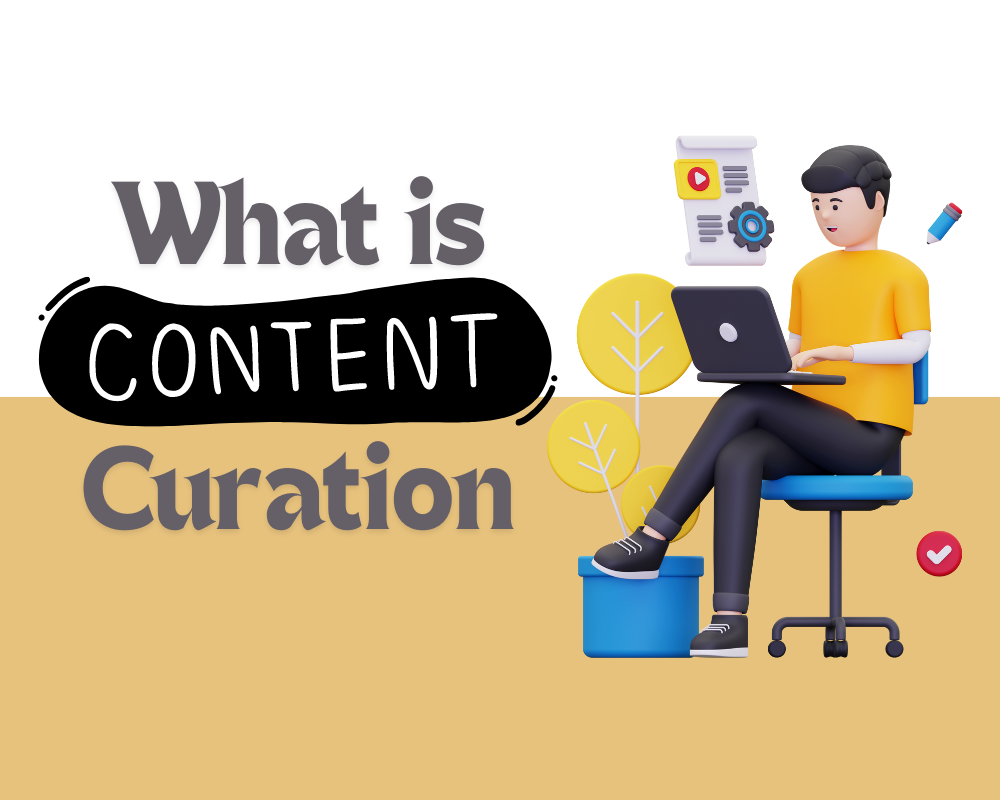Ever wondered why some businesses seem to attract customers while others struggle to get noticed effortlessly? It often boils down to one key factor: content marketing. In today’s digital world, content is everywhere. From the blogs to videos we read, it’s all part of a larger strategy designed to engage and convert. But what exactly is content marketing, and why should it matter to you? Understanding the basics of content marketing can be the game-changer you need to elevate your business. Whether you’re a seasoned marketer or a small business owner, knowing how to create and share valuable content is crucial for staying competitive.
What is Content Marketing?
Content marketing is about creating and sharing valuable, relevant content to attract and engage a target audience. But let’s break it down a bit more. At its core, content marketing isn’t just about selling products or services; it’s about providing useful information that answers questions, solves problems, or entertains. Think of it as building a relationship with your audience—one piece of content at a time.
The concept of content marketing isn’t new. It has roots going back centuries, from when John Deere first published The Furrow magazine to help farmers with tips and tricks. Fast forward to today, and content marketing is everywhere. Whether it’s a blog post, a how-to video, a podcast, or a well-designed infographic, content marketing is designed to connect with people on a deeper level, ultimately leading them to trust and do business with you.
Take, for example, a local bakery that starts a blog sharing baking tips and recipes. Over time, this bakery has become known not just for its delicious treats but also as a go-to source for baking knowledge. People begin to follow the blog, try the recipes, and, when they’re in town, stop by the bakery to taste the original. This is content marketing at work—turning a simple blog into a tool for building brand loyalty and driving sales.
Why Content Marketing Matters
So, why should you care about content marketing? Well, in a world where consumers are constantly bombarded with advertisements and sales pitches, content marketing offers a breath of fresh air. Instead of pushing products, it pulls customers in by providing something valuable—whether that’s knowledge, entertainment, or a solution to a problem. Here’s why that matters:

1. Building Brand Awareness and Trust
Content marketing helps your business get noticed. By consistently providing valuable information, you establish yourself as an authority in your field. Over time, this builds trust with your audience. When people trust your brand, they’re more likely to choose your products or services over those of a competitor. For example, a financial advisor who regularly shares insightful blog posts about managing personal finances can become the go-to resource for people looking for financial guidance.
2. Driving Customer Engagement and Loyalty
Engaging content keeps your audience coming back for more. Whether it’s through informative blog posts, engaging social media updates, or interactive videos, content marketing allows you to connect with your audience on a personal level. This connection fosters loyalty. Customers who feel a connection with your brand are not only more likely to buy from you, but they’re also more likely to recommend you to others.
3. Boosting SEO and Online Visibility
Search engines love fresh, high-quality content. By regularly updating your website or blog with new content, you improve your chances of ranking higher on search engine results pages (SERPs). This increased visibility can drive more traffic to your site, leading to more leads and, ultimately, more sales. For instance, a local pet store that publishes weekly articles about pet care can attract pet owners searching for information online, leading to higher foot traffic in their store.
Content marketing is more than just a marketing tactic—it’s a strategic approach to building a sustainable relationship with your audience. It’s about being there for your customers when they need you, which, in turn, makes them more likely to support your business in the long run.
Key Elements of a Successful Content Marketing Strategy
Creating content just for the sake of it isn’t enough—you need a solid strategy to guide your efforts and ensure you’re getting the most out of your content marketing. Here are the key elements that make up a successful content marketing strategy:

1. Understanding Your Audience and Their Needs
The foundation of any great content marketing strategy is a deep understanding of your target audience. Who are they? What are their interests, pain points, and needs? What kind of content do they consume, and where do they spend their time online? Answering these questions helps you create content that resonates with your audience and addresses their specific needs. For example, if you’re targeting busy professionals, you might focus on creating quick, actionable tips that can be read or listened to on the go.
2. Setting Clear Goals and Objectives
Before you start creating content, it’s essential to know what you want to achieve. Are you looking to increase brand awareness, generate leads, drive traffic to your website, or boost sales? Setting clear goals and objectives will help you measure the success of your content marketing efforts and make adjustments as needed. For instance, if your goal is to drive more traffic to your website, you might focus on producing SEO-optimized blog posts that rank well on search engines.
3. Creating a Content Calendar and Strategy
Consistency is key in content marketing. A content calendar helps you plan and schedule your content in advance, ensuring you’re consistently providing valuable information to your audience. Your content strategy should outline the types of content you’ll create, the topics you’ll cover, and the channels you’ll use to distribute your content. This strategic planning ensures that your content is aligned with your business goals and resonates with your audience.
4. Measuring and Analyzing Content Performance
To know if your content marketing efforts are paying off, you need to measure and analyze the performance of your content. This involves tracking key metrics like website traffic, engagement rates, social shares, and conversion rates. Tools like Google Analytics, social media insights, and content management systems can provide valuable data on what’s working and what’s not. By regularly reviewing this data, you can make informed decisions and refine your content strategy to achieve better results.
A successful content marketing strategy isn’t a one-size-fits-all approach. It’s about understanding your audience, setting clear goals, creating valuable content consistently, and continuously analyzing your performance to improve. By focusing on these key elements, you can develop a strategy that drives meaningful results for your business.
Types of Content Marketing and Their Uses
Content marketing comes in many shapes and sizes, each with its unique advantages and best uses. Understanding the different types of content marketing can help you choose the right formats to reach your audience and achieve your goals. Here are some of the most popular types:

1. Blog Posts and Articles
Blog posts are the cornerstone of content marketing. They are versatile, easy to produce, and highly effective at driving traffic to your website. Well-written blog posts can help establish your authority in your industry, provide valuable information to your audience, and improve your SEO. Topics can range from how-to guides and listicles to opinion pieces and industry news. For example, a tech company might write blog posts about the latest advancements in AI technology or provide tips for troubleshooting common software issues.
2. Social Media Content
Social media platforms like Facebook, Instagram, Twitter, and LinkedIn are excellent channels for reaching a broad audience and driving engagement. Social media content can include short posts, images, videos, polls, and stories. It’s an effective way to share quick updates, promote your blog content, interact with your audience, and build a community around your brand. For instance, a fashion retailer might use Instagram to showcase their latest collection and share behind-the-scenes content to connect with their followers.
3. Videos and Podcasts
Videos and podcasts are rapidly growing in popularity as more people prefer consuming content in these formats. Videos can range from product demonstrations and customer testimonials to educational content and live streams. Podcasts, on the other hand, are great for sharing in-depth discussions, interviews, and stories. Both formats allow you to convey complex information in an engaging and easily digestible way. A fitness brand might create workout tutorials on YouTube or host a podcast discussing nutrition tips and fitness trends.
4. Infographics and Visual Content
Infographics and visual content are powerful tools for communicating information quickly and clearly. They combine images, graphics, and text to make complex information more understandable and engaging. Infographics are particularly effective for sharing data, statistics, and step-by-step processes. For example, a digital marketing agency might create an infographic to explain the steps involved in launching a successful social media campaign.
5. Case Studies, White Papers, and E-Books
These longer-form types of content are ideal for showcasing your expertise and providing in-depth information on a specific topic. Case studies highlight how your product or service has helped a customer solve a problem, white papers provide a detailed analysis of a particular issue or topic, and e-books offer comprehensive guides on subjects relevant to your audience. These types of content are particularly effective for generating leads and building credibility with potential customers. A software company might publish a white paper discussing the benefits of using their platform for data analytics.
Each type of content marketing has its strengths and can be used strategically to achieve different goals. By mixing and matching these formats, you can create a diverse content strategy that keeps your audience engaged and coming back for more.
Benefits of Content Marketing for Businesses
Content marketing isn’t just a buzzword—it’s a powerful tool that can transform your business in numerous ways. By investing in content marketing, businesses can reap a variety of benefits that contribute to long-term success. Let’s dive into some of the key advantages:

1. Increased Website Traffic and Leads
One of the most immediate benefits of content marketing is the increase in website traffic. By creating valuable, SEO-optimized content, you can attract more visitors to your website. This increased traffic can lead to more leads, as potential customers discover your brand and engage with your content. For example, a real estate agent who publishes a blog about the best neighborhoods for families can attract homebuyers searching for that information online, bringing more qualified leads to their site.
2. Improved Brand Reputation and Authority
Content marketing allows you to showcase your expertise and position your brand as a trusted authority in your industry. By consistently providing high-quality, relevant content, you can build credibility and trust with your audience. When people see that you know your stuff and are willing to share that knowledge, they’re more likely to choose your brand over competitors. For instance, a cybersecurity firm that publishes detailed guides on protecting against cyber threats can establish itself as a leader in the field.
3. Cost-Effective Marketing Strategy
Compared to traditional advertising, content marketing is a cost-effective way to reach your target audience. While creating high-quality content requires an investment of time and resources, the cost is often lower than running ads on TV, radio, or in print. Plus, content marketing has a longer shelf life—once you publish a blog post or video, it continues to attract traffic and generate leads long after the initial creation. This makes content marketing an excellent long-term strategy for businesses looking to maximize their marketing budget.
4. Long-Term Benefits and ROI
Content marketing is a marathon, not a sprint. While it may take some time to see the results of your efforts, the long-term benefits are worth the wait. High-quality content can continue to generate traffic, leads, and sales for months or even years after it’s published. This evergreen quality of content marketing provides a better return on investment (ROI) over time. For example, a tutorial video that answers a common question in your industry can keep bringing in views and driving traffic to your website long after it’s been created.
Content marketing is more than just a tactic; it’s a strategic approach that can significantly impact your business’s success. From driving more traffic and leads to building brand authority and improving ROI, the benefits of content marketing are clear. By focusing on creating valuable, engaging content, you can set your business up for long-term success.
How to Get Started with Content Marketing
Ready to dive into content marketing but unsure where to begin? Getting started can feel overwhelming, but breaking it down into manageable steps can help simplify the process. Here’s a step-by-step guide to help you kick off your content marketing journey:

1. Define Your Goals and Objectives
Before creating any content, it’s crucial to define what you want to achieve with your content marketing efforts. Are you looking to increase brand awareness, generate leads, drive more traffic to your website, or boost sales? Having clear goals will guide your strategy and help you measure success. For instance, if your goal is to drive traffic, you’ll focus on creating SEO-optimized blog posts that rank well in search engines.
2. Understand Your Audience
To create content that resonates with your audience, you need to understand who they are and what they need. Conduct research to gather insights about your target audience’s demographics, interests, pain points, and content preferences. This can be done through surveys, social media analysis, and customer interviews. Understanding your audience will help you create relevant and engaging content that addresses their specific needs and challenges.
3. Create a Content Plan and Calendar
Once you know your goals and audience, it’s time to plan your content. A content calendar helps you organize and schedule your content in advance, ensuring consistency and alignment with your marketing strategy. Start by brainstorming content ideas that align with your audience’s interests and your business goals. Then, map out when and where you’ll publish each piece of content. A well-thought-out content plan keeps you organized and focused, preventing last-minute scrambles for ideas.
4. Start Creating High-Quality Content
With your plan in place, it’s time to start creating content. Focus on producing high-quality, valuable content that addresses your audience’s needs and interests. Whether it’s a blog post, video, infographic, or podcast, make sure your content is engaging, informative, and easy to consume. Don’t forget to optimize your content for SEO by using relevant keywords, adding meta descriptions, and including internal and external links.
5. Promote Your Content
Creating great content is only half the battle—you also need to promote it. Share your content across your social media channels, email newsletters, and other platforms where your audience is active. Consider collaborating with influencers or partners to expand your reach. Engaging with your audience through comments, shares, and discussions can also help increase your content’s visibility and impact.
6. Measure and Analyze Your Results
To understand the effectiveness of your content marketing efforts, you need to measure and analyze your results. Use tools like Google Analytics, social media insights, and email marketing metrics to track key performance indicators (KPIs) such as website traffic, engagement rates, and conversion rates. Regularly reviewing this data will help you identify what’s working and what’s not, allowing you to refine your strategy and improve your results.
7. Continuously Improve and Adapt
Content marketing is an ongoing process that requires continuous improvement and adaptation. As you gather more data and insights, use them to tweak your strategy, experiment with new content formats, and explore different distribution channels. Staying flexible and open to change will help you stay ahead of the competition and keep your content marketing efforts fresh and effective.
By following these steps, you can build a strong foundation for your content marketing strategy and start creating content that engages your audience, drives traffic, and supports your business goals.
Common Content Marketing Mistakes to Avoid
While content marketing offers many benefits, it’s easy to make mistakes that can hinder your success. By being aware of these common pitfalls, you can avoid them and ensure your content marketing efforts are as effective as possible. Here are some of the most frequent content marketing mistakes and how to steer clear of them:

1. Overlooking the Importance of Quality Over Quantity
One of the biggest mistakes in content marketing is focusing on quantity rather than quality. While it might be tempting to churn out content to keep up with a hectic publishing schedule, it’s far more important to create high-quality, valuable content that truly resonates with your audience. Poorly researched or hastily written content can harm your brand’s reputation and fail to engage your audience. Instead, focus on producing well-crafted content that provides real value, even if it means publishing less frequently.
2. Neglecting Audience Research and Feedback
Creating content without understanding your audience is like throwing darts in the dark—you’re unlikely to hit the mark. Neglecting audience research and feedback can lead to content that doesn’t resonate or address the needs and interests of your target market. To avoid this mistake, make sure to regularly gather insights about your audience through surveys, social media interactions, and analytics. Listening to feedback and staying attuned to your audience’s evolving preferences will help you create content that truly engages and satisfies.
3. Failing to Optimize Content for SEO
Content that isn’t optimized for search engines can easily get lost in the vast ocean of the internet, never reaching your intended audience. SEO (Search Engine Optimization) is crucial for making your content discoverable and driving organic traffic to your site. Common SEO mistakes include neglecting keyword research, not using meta descriptions, and failing to include internal and external links. To optimize your content for SEO, use relevant keywords naturally throughout your content, create compelling meta titles and descriptions, and ensure your site is fast and mobile-friendly.
4. Ignoring the Power of Distribution and Promotion
Even the best content won’t achieve its goals if no one sees it. Many marketers make the mistake of focusing solely on content creation and neglecting the distribution and promotion of their content. To maximize your content’s reach, you need to actively promote it across various channels, such as social media, email newsletters, and industry forums. Leveraging multiple platforms ensures that your content reaches a wider audience and drives more traffic back to your site.
5. Not Measuring and Analyzing Performance
Without tracking your content’s performance, it’s impossible to know if your efforts are paying off or if there’s room for improvement. Failing to measure and analyze key metrics like traffic, engagement, and conversions can leave you in the dark about what’s working and what’s not. To avoid this mistake, regularly monitor your content’s performance using tools like Google Analytics, social media insights, and CRM software. This data will provide valuable insights into your content’s effectiveness and help you refine your strategy for better results.
By avoiding these common content marketing mistakes, you can ensure that your efforts are more effective, engaging, and aligned with your business goals. Remember, content marketing is a long-term strategy, and success comes from consistently providing value, understanding your audience, and adapting to changes along the way.
Case Studies of Successful Content Marketing Campaigns
Looking at real-world examples of successful content marketing campaigns can provide valuable insights and inspiration for your own strategy. These case studies showcase how different brands have effectively used content marketing to achieve their goals and connect with their audience. Let’s explore a few notable campaigns:

1. HubSpot’s Inbound Marketing Blog
HubSpot, a leader in inbound marketing and sales software, has built a reputation as an industry authority through its highly successful blog. HubSpot’s content strategy focuses on creating educational and actionable content that helps marketers, salespeople, and customer service professionals excel in their roles. By consistently publishing high-quality blog posts, guides, and e-books, HubSpot has attracted a massive audience and generated a steady stream of leads.
Key Takeaway: HubSpot’s success demonstrates the power of providing valuable, educational content that aligns with the needs of your target audience. By focusing on creating content that solves problems and educates readers, you can position your brand as a trusted resource and drive significant traffic and leads.
2. Coca-Cola’s “Share a Coke” Campaign
Coca-Cola’s “Share a Coke” campaign is a classic example of how content marketing can create a personal connection with consumers. The campaign featured personalized Coke bottles with popular names and encouraged people to share their own “Share a Coke” stories on social media. This simple yet effective campaign generated massive social media engagement, increased sales, and strengthened Coca-Cola’s brand loyalty.
Key Takeaway: Coca-Cola’s campaign highlights the importance of creating personalized, shareable content that resonates with your audience. By tapping into emotions and encouraging user-generated content, you can create a strong community around your brand and increase engagement.
3. Airbnb’s Neighborhood Guides
Airbnb, the online marketplace for vacation rentals, has leveraged content marketing to enhance the travel experience and build trust with its community. Their “Neighborhood Guides” provide in-depth information about different neighborhoods in cities worldwide, helping travelers discover hidden gems and unique experiences. These guides not only add value to Airbnb’s platform but also position the brand as an authority in travel.
Key Takeaway: Airbnb’s Neighborhood Guides show the effectiveness of content marketing in adding value beyond your core product or service. By providing useful, engaging content that enhances the customer experience, you can build trust and establish your brand as an authority in your industry.
4. GoPro’s User-Generated Content Strategy
GoPro, the maker of action cameras, has built a thriving community by encouraging its users to share videos and photos taken with their GoPro cameras. The company regularly features user-generated content on its social media channels and website, showcasing the creativity and adventures of its customers. This strategy not only promotes GoPro’s products but also fosters a sense of community and authenticity around the brand.
Key Takeaway: GoPro’s strategy demonstrates the power of user-generated content in content marketing. By leveraging the creativity of your audience and showcasing their experiences, you can build a strong community around your brand and increase customer loyalty.
5. Red Bull’s Extreme Content Marketing
Red Bull is a master of content marketing, particularly in the extreme sports niche. The company produces high-quality videos, articles, and live broadcasts of extreme sports events, creating a vast library of engaging content that appeals to its target audience. Red Bull’s content marketing efforts have helped the brand become synonymous with adventure, energy, and excitement, extending far beyond its core product of energy drinks.
Key Takeaway: Red Bull’s success highlights the importance of aligning your content with your brand’s values and audience interests. By creating content that resonates with your audience’s passions and interests, you can build a strong brand identity and attract a loyal following.
These case studies show that successful content marketing campaigns are built on understanding your audience, providing valuable content, and encouraging engagement. By learning from these examples and applying similar strategies, you can create content that resonates with your audience and drives meaningful results for your business.
Conclusion
Content marketing is more than just a trendy buzzword; it’s a powerful strategy that can transform the way you engage with your audience, build brand loyalty, and drive business growth. By understanding the basics of content marketing, from defining your goals and understanding your audience to creating high-quality content and avoiding common pitfalls, you can set the foundation for a successful content marketing strategy.
As we’ve seen from the various case studies, brands that invest in creating valuable, engaging, and relevant content are the ones that succeed in building a strong community and achieving their business objectives. Whether you’re just starting out or looking to refine your current strategy, the key is to be consistent, stay true to your brand’s voice, and continuously adapt to the changing needs of your audience.
So, why wait? Start exploring the world of content marketing today. Develop a content strategy that aligns with your goals, create content that resonates with your audience, and watch as your brand grows stronger with every piece of content you share. Remember, the more you invest in creating meaningful content, the more you’ll get back in terms of engagement, loyalty, and success.














